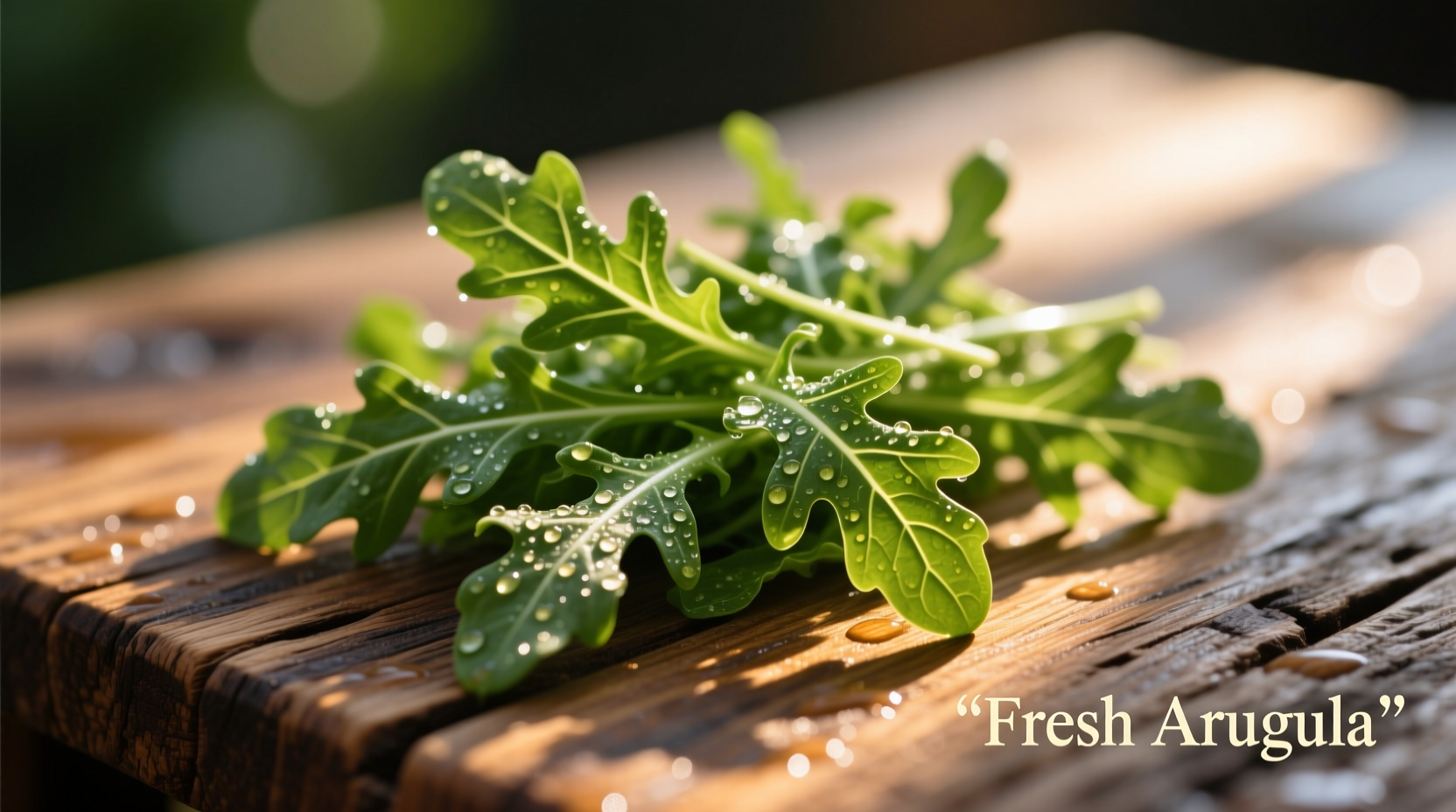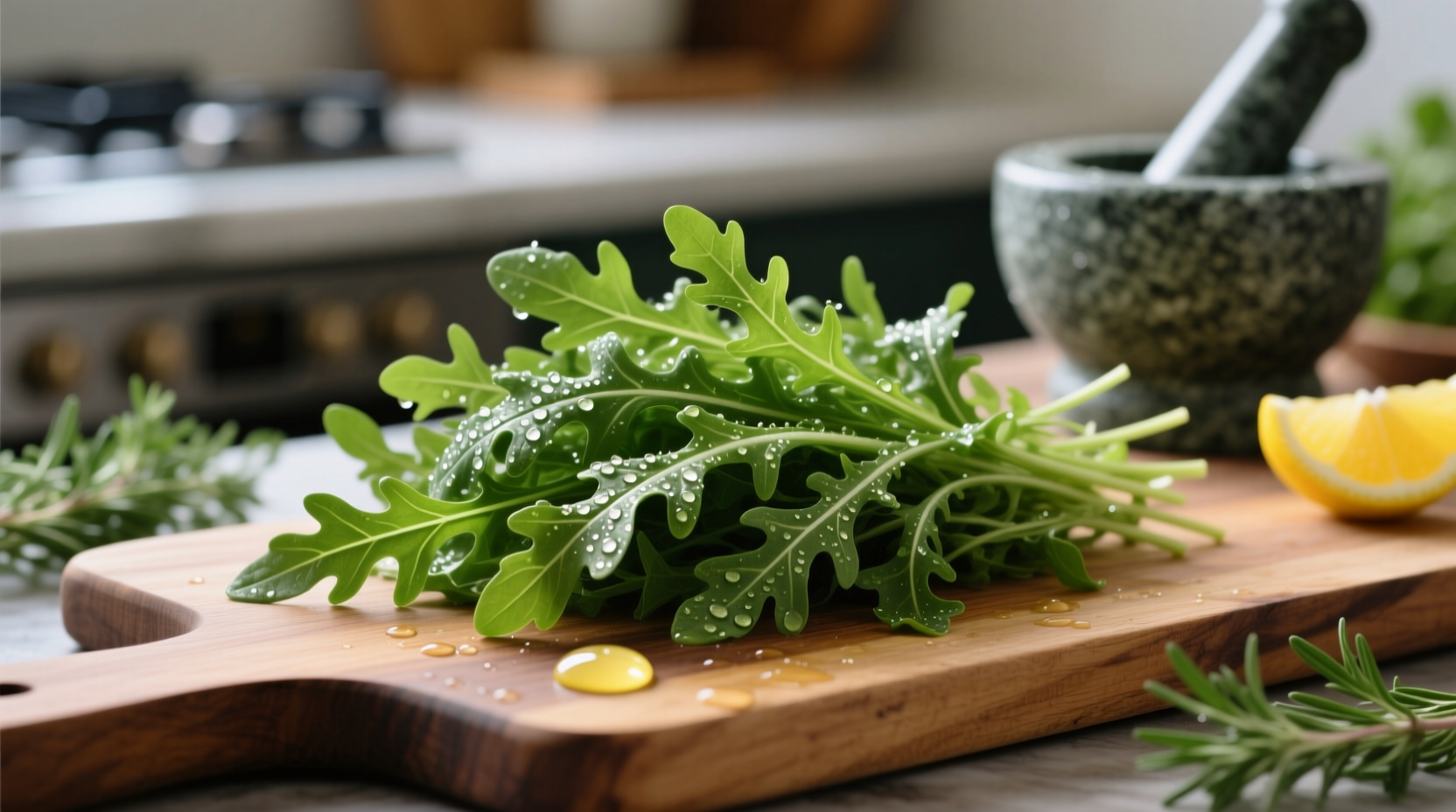Ever wondered what makes arugula stand out in your salad mix? That unmistakable kick you feel isn't just in your imagination—it's science meeting culinary delight. Understanding arugula's unique flavor profile transforms how you use this versatile green in everyday cooking. Whether you're a home cook experimenting with new ingredients or a seasoned chef refining your dishes, knowing exactly what does arugula taste like helps you harness its full potential.
The Science Behind Arugula's Signature Flavor
Arugula's characteristic peppery bite comes from glucosinolates—sulfur-containing compounds that serve as the plant's natural defense mechanism. When you chew arugula leaves, enzymes break down these compounds into pungent isothiocyanates, creating that signature spicy sensation similar to mustard or horseradish. The concentration of these compounds varies based on growing conditions, harvest time, and leaf maturity.
According to research from the University of California Agriculture and Natural Resources, arugula's flavor intensity directly correlates with environmental stressors. Plants grown in cooler temperatures with moderate water stress develop higher concentrations of these flavor compounds, resulting in a more pronounced peppery taste (UC ANR, 2023).

Arugula Flavor Profile: Breaking Down the Taste Experience
Describing arugula's taste requires understanding its multi-dimensional flavor profile:
- Peppery kick - The dominant characteristic, ranging from mild to intensely spicy
- Bitter undertones - More pronounced in mature leaves, balancing the pepperiness
- Nutty notes - Especially noticeable when leaves are massaged or wilted
- Mustardy finish - A subtle aftertaste that complements rich ingredients
Baby arugula offers a milder version of this profile, making it more approachable for beginners, while mature arugula delivers a robust, complex flavor that stands up to bold ingredients.
How Arugula Compares to Other Salad Greens
Understanding what does rocket taste like compared to other greens helps you make informed substitutions in recipes. This comparison reveals why arugula occupies a unique space in the leafy green spectrum:
| Green | Peppery Level | Bitterness | Best Culinary Uses |
|---|---|---|---|
| Arugula (baby) | Moderate | Low | Salads, sandwiches, pizza topping |
| Arugula (mature) | High | Moderate | Pasta dishes, pesto, sautéed preparations |
| Spinach | None | Very Low | Cooked dishes, smoothies, mild salads |
| Kale | None | High | Ribollita, massaged salads, baked chips |
| Mizuna | Moderate-High | Low | Asian-inspired salads, garnishes |
Factors That Transform Arugula's Flavor
Your experience of what does rucola taste like depends on several key factors that home cooks can control:
Growing Conditions Matter
Arugula grown in partial shade develops a milder flavor than plants in full sun. The USDA notes that soil composition significantly impacts taste—arugula grown in nitrogen-rich soil produces larger, milder leaves, while plants in leaner soil develop more concentrated flavors (USDA Agricultural Research Service).
Harvest Timing Changes Everything
Harvesting arugula in the morning after a cool night yields the sweetest, mildest leaves. As temperatures rise during the day, the plant's natural defense mechanisms activate, increasing the concentration of those peppery compounds. For the most balanced flavor, pick leaves before the plant bolts (goes to seed).
Preparation Techniques Modify Intensity
How you handle arugula dramatically affects its taste profile:
- Raw consumption - Delivers maximum peppery punch
- Massaging with oil - Breaks down cell walls, reducing bitterness
- Quick wilting - Heat transforms sharpness into nutty sweetness
- Pairing with fats - Olive oil or cheese mellows the pepperiness
Culinary Applications Based on Flavor Profile
Knowing what does arugula taste like raw versus cooked unlocks creative cooking possibilities. The key is matching its flavor characteristics with complementary ingredients:
Perfect Pairings for Raw Arugula
Balance arugula's peppery bite with:
- Fatty ingredients: avocado, nuts, olive oil, or cheese (pecorino works particularly well)
- Sweet elements: ripe pears, strawberries, or balsamic glaze
- Creamy components: goat cheese or yogurt-based dressings
Cooking Techniques That Transform Flavor
When exposed to heat, arugula's sharp compounds break down, revealing unexpected dimensions:
- Quick sauté (15-30 seconds) preserves some pepperiness while adding earthiness
- Wilted into pasta at the end of cooking creates a sophisticated sauce base
- Blended into pesto with walnuts and parmesan creates a complex, layered flavor
- Added to pizza after baking maintains some bite while mellowing the edges
Common Misconceptions About Arugula's Taste
Many home cooks misunderstand arugula's flavor profile, leading to disappointing results:
- Mistaking bitterness for spoilage - Some bitterness is natural, especially in mature leaves
- Expecting uniform flavor - Flavor varies significantly by season and growing conditions
- Confusing it with radicchio - While both are bitter, radicchio has a completely different flavor profile
- Overdressing delicate baby arugula - Heavy dressings overwhelm its subtle notes
Understanding these distinctions helps you work with arugula's natural characteristics rather than against them.
Seasonal Flavor Variations You Should Know
Arugula's taste changes throughout the growing season—a crucial consideration for home gardeners and market shoppers alike. Spring-harvested arugula typically offers the most balanced flavor profile, with moderate pepperiness and subtle nuttiness. Summer arugula becomes noticeably more pungent as temperatures rise, while fall crops often develop complex, earthy undertones as daylight decreases.
According to agricultural studies from Cornell University, the compound responsible for arugula's peppery kick (phenethyl isothiocyanate) increases by approximately 40% when daytime temperatures exceed 75°F (Cornell Cooperative Extension). This explains why your spring salad tastes dramatically different from the same variety harvested in midsummer.
Putting It All Together: Mastering Arugula in Your Kitchen
Now that you understand what does arugula taste like and what influences its flavor, you can confidently incorporate it into your cooking repertoire. Start with baby arugula for delicate applications, graduate to mature leaves when you want that signature kick, and don't be afraid to experiment with cooking methods that transform its flavor profile.
Remember that arugula's distinctive taste isn't a flaw—it's a feature. That peppery complexity elevates simple dishes and adds dimension to your culinary creations. Whether you're crafting a sophisticated salad or adding the finishing touch to a pizza, understanding arugula's flavor profile puts you one step closer to cooking with professional precision.











 浙公网安备
33010002000092号
浙公网安备
33010002000092号 浙B2-20120091-4
浙B2-20120091-4